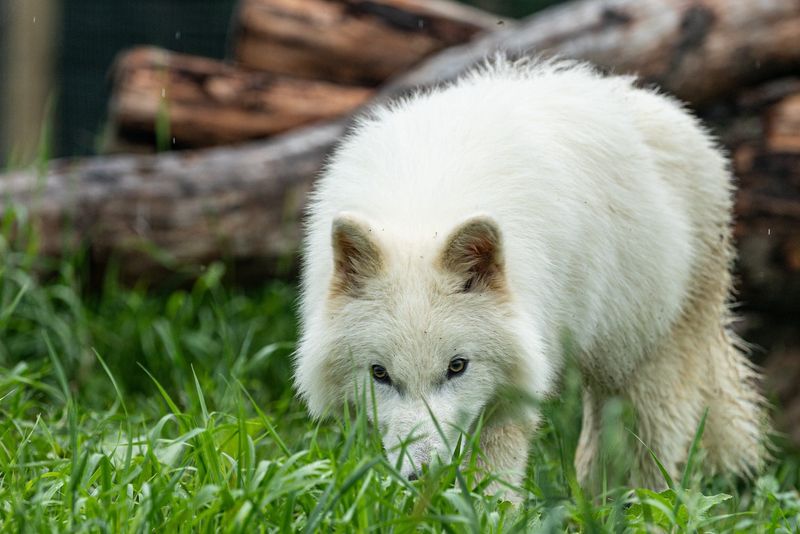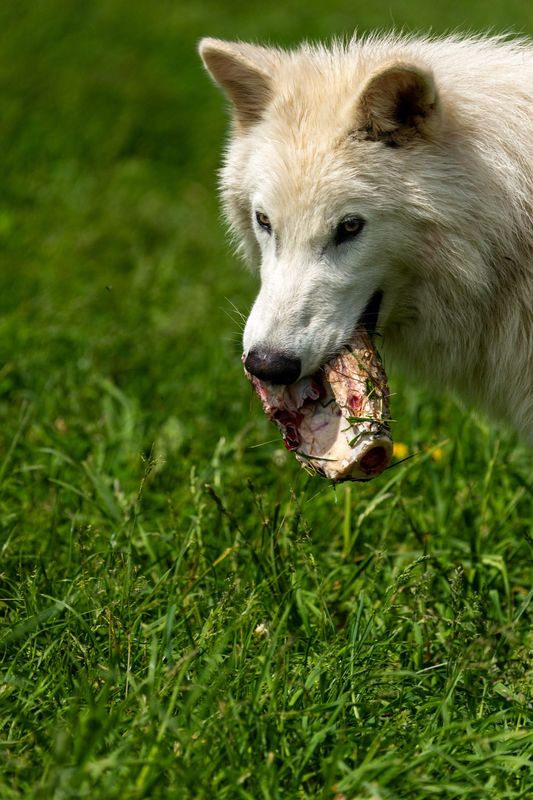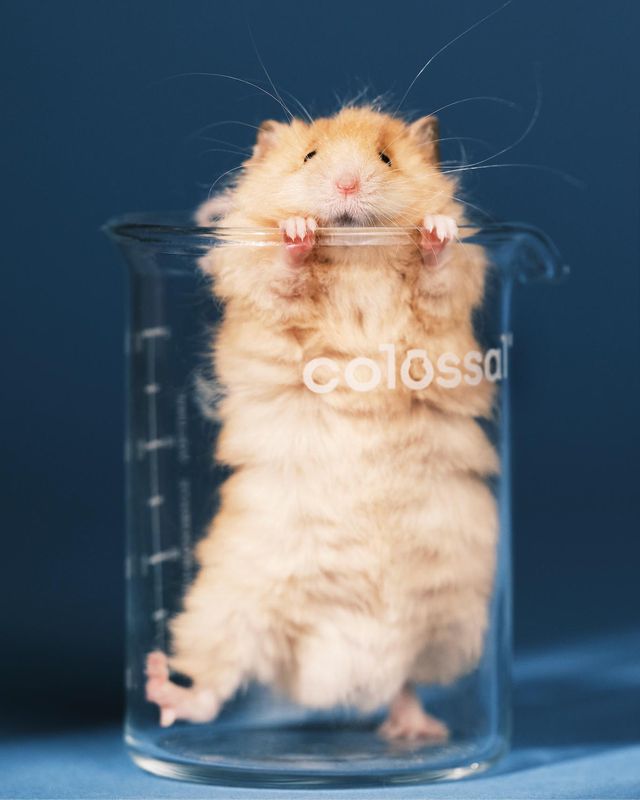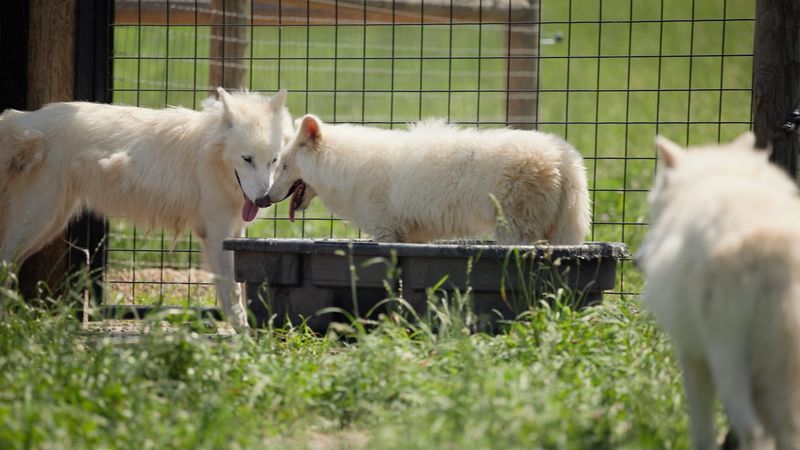



Those cute dire wolves are forming a pack.
If you remember, Colossal Biosciences, the company seeking to bring back the woolly mammoth, revealed in April 2025 it had successfully birthed a trio of dire wolf puppies.
Using dire wolf DNA extracted from fossils – yes, dire wolves aren't just the stuff of "Game of Thrones" fiction, they existed tens of thousands of years ago – the Colossal researchers created dire wolf genomes. They used those as a guide to editing a gray wolf genome to express dire wolf traits. The resultant fertilized dire wolf eggs were implanted into and born by surrogate dog mothers, resulting in the successful resurrection of an Ice Age-era species.
Two male dire wolves, Romulus and Remus, born in October 2024, are approaching their first birthday – each weighed more than 90 pounds at six months old, significantly larger than standard gray wolves, the Dallas, Texas-based biotech company says – while a female, Khaleesi (named after the "Game of Thrones" character), is about six months old.
Watch dire wolves play together in first meeting
'She's completely been accepted into the pack': All in the dire wolf family
Recently, the Colossal team thought it was time to introduce the brothers to their sister. "We're working through the socialization and the introduction of Khaleesi into the pack," Colossal CEO and co-founder Ben Lamm told USA TODAY. "They're starting to behave more and more like wolves," he said. "We don't want them to be lap dogs."
You can see Khaleesi come into a grassy, fenced six-acre section of Colossal's 2,000-acre ecological preserve where she first gets to meet Romulus, in a video posted Aug. 12 on Colossal's YouTube channel. "At first, she was a little like, 'Whoa, he's right there," said Paige McNickle, manager of animal husbandry at Colossal and manager of the team that takes care of the dire wolves.
The older male wolf, Romulus, came up to Khaleesi, and they smelled each other and then she took off on a run and he followed her. "They were playing with each other. Their ears were up the entire time, which is a good, happy, calm, wolf behavior that we were hoping to see," McNickle said.
After a bit, Romulus is ushered away and Remus is brought into the area. "They were both excited. Everybody was so good in play, but Remus is almost more gentle than Romulus," McNickle said.
"Romulus is just a little bit bigger, and Remus did really good. We saw lots of play behaviors," she said. "They kept their ears up, they wagged their tails. They followed each other around. They all got to explore the pool together. When they got hot, they went right over and cooled themselves off, especially Khaleesi."
The trio then got to play together, although in coming days, she will get extended time with one brother on one day and another on the next day, McNickle said. The play area has a collection of logs, which Khaleesi is small enough to fit under, where she occasionally played hide and seek from her larger brothers.
"We want to make sure that … (when) they're playing, they can separate, they can socialize, they can smell each other, but then, you know, if Khaleesi wants to get away – or Romulus or Remus want to get away – we need to make sure that we give them that comfort so they don't feel overwhelmed or feel pressured," Lamm said. "But the great news about it is she's completely been accepted into the pack."
Leader of the dire wolf pack
That pack will likely be growing. Colossal is planning to engineer two to four more dire wolves over the next year, Lamm said. Rather than let these wolves breed, the researchers want future pups from "a couple different cell lines," he said. "We will actually get more genetic diversity."
And wolves of different ages, as they are adopted in the pack, will grow up "in some kind of social hierarchy."
As of now, Remus, the smaller of the male wolves, appears to be emerging as the leader, having exhibited Alpha male characteristics. When the dire wolves were first introduced to the world, Remus "kind of became the star," Lamm said. "Remus really has this take-charge attitude. … Romulus has always been bigger and I just thought, natural selection, the biggest and strongest."
Recently, Romulus and Remus began receiving larger carcasses for feeding – from rabbits to deer legs and cattle portions, beyond their regular menu of ground meat, meat chunks, and other foods – so they would learn important social skills.
Colossal is currently working with Grizzly Systems and Yellowstone National Park’s Wolf Project, deploying audiovisual recording devices to understand pack behavior and wolf populations. Artificial intelligence software helps identify "specific wolves in that setting and then begin to understand how we can estimate population size based on how many times we count the same wolf," said Matt James, Colossal's chief animal officer, in another video on the company's YouTube channel.
Those devices will eventually be deployed in Colossal's reserve to monitor its growing dire wolf pack. Those tools will make it "so that we can just be observing them in a more passive manner," Lamm said. "This is just the next chapter in their story."
Colossal continues other projects amid dire wolf controversy
Critics have argued that the pups are not truly dire wolves, but genetically-modified gray wolves. Colossal has countered that their dire wolves share 99.5% of the same genetics as the original dire wolf. Some have also scolded Colossal for tinkering with genetics, but the tech firm insists its work will aid in the conservation and protection of endangered species.
Recently, Colossal announced plans to resurrect the long-extinct New Zealand bird species, the moa, at the urging of filmmaker Peter Jackson, who is an investor in Colossal.
Colossal first gained attention with its 2021 announced goal of bringing back the woolly mammoth. Earlier this year, the company unveiled its Colossal Woolly Mouse, which was genetically engineered to have characteristics that could eventually be used in creating a next-generation woolly mammoth embryo to be born by a female elephant.
In August 2022, the company said it also planned to de-extinct the Australian thylacine, or Tasmanian tiger. Another project: the return of the dodo, which was killed off about 350 years ago.
Mike Snider is a national trending news reporter for USA TODAY. You can follow him on Threads, Bluesky, X and email him at mikegsnider & @mikegsnider.bsky.social & @mikesnider & msnider@usatoday.com
What's everyone talking about? Sign up for our trending newsletter to get the latest news of the day
This article originally appeared on USA TODAY: Dire wolf meet-up: Watch Colossal's female wolf frolic with older brothers
Reporting by Mike Snider, USA TODAY / USA TODAY
USA TODAY Network via Reuters Connect

 USA TODAY National
USA TODAY National
 Associated Press Entertainment Video
Associated Press Entertainment Video CNN
CNN Associated Press Top News
Associated Press Top News KSL Utah
KSL Utah Gizmodo
Gizmodo The Hollywood Gossip
The Hollywood Gossip FOX News Health
FOX News Health